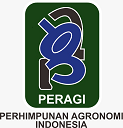RESPONSE OF LOCAL POTATO CULTIVARS TO LATE BLIGHT DISEASE (Phytophthora infestans (Mont.) de Bary) UNDER FIELD CONDITIONS
Abstract
Developing host resistance is an economic and long-term approach to disease management; however, resistance reactions that differ depending on the genotypes. Potato late blight is the devastating disease caused due to Phytophthora infestans (Mont.) de Bary. In order to identify late blight resistance in potato genotypes, seven local potato cultivars (Bardiya Rato Local, Bardiya Seto Local, Cardinal, Deukhuri Rato Local, Deukhuri Seto Local, Kailali Local and Khumal Ujjowal) were evaluated in randomized complete block design (RCBD) with three replications during October 2018 to January 2019 on naturally infested soils in Deukhuri, Dang, Nepal. Results showed that significantly the highest disease incidence (99.17%), and the highest disease severity (88%) were found on Cardinal followed by Deukhuri Rato Local (64%), and Deukhuri Seto Local (60%). Potato cultivar namely Khumal Ujjowal was moderately resistant, whereas Deukhuri Rato local and Deukhuri Seto Local were susceptible to late blight disease. Significantly the highest yield (12.67 t ha-1) was produced by Khumal Ujjowal followed by Bardiya Rato Local (10.78 t ha-1) and Bardiya Seto Local (9.40 t ha-1). The disease incidence and Area under disease progressive curve (AUDPC) value was negatively co-related with the tuber yield. The potato cultivar Khumal Ujjowal followed by Bardiya Rato Local were found moderately resistant to late blight disease in Deukhuri conditions. This study suggests that potato cultivar Bardiya Rato Local can be grown for higher tuber production in Dang and similar topographic regions.
DOI: 10.37637/ab.v3i1.464
Keywords
Full Text:
PDFReferences
Addisu, F., Yohannes, P., & Habtamu, Z. (2013). Genetic variability and association between agronomic characters in some potato (Solanum tuberosum L.) genotypes in SNNPRS Ethiopia. International Journal of. Biodiversity and Conservation, 5(8), 523–528.
Agrios, G. N. (2005). Plant Pathology 5th. (ed.). Academic Press.
André, D., Peter, K., & Oscar, O. (2014). Potatoes for sustainable global food security. Potato Research, 57, 185–199. https://doi.org/10.1007/s11540-014- 9265-1
Baye, B. (2002). Variability and Association of tuber yield and related trait in potato (Solanum tuberosum L.). Haramaya University, Haramaya.
Dahal, B. R., & Rijal, S. (2019). Production Economics and Determinants of PotatoProduction in Nuwakot, Nepal. International Journal of Applied Science and Biotechnology, 7(1), 62–68.
Gairhe, S., Gauchan, D., & Timsina, K. (2017). Adoption of Improved Potato Varieties in Nepal. Journal of Nepal Agricultural Research Council, 3(1), 38–44.
Gomez, K. A., & Gomez, A. A. (1984). Statistical procedures for agricultural research. 2nd edn. International Rice Research Institute, College, Laguna.
Hardy, B., Trognitz, B., & Forbes, G. (1995). Late blight breeding at CIP: Progress to date. CIP Circular, International Potato Center (CIP).
Inglis, D. A., Johnson, D. A., Legard, D. E., Fry, W. E., & Hamm, P. . (1996). Relative resistances of potato clones in response to new and old populations of Phytophthora infestans. Plant Disease, 80, 575–578.
Jaime, S., Ivette, A., Florence, E., & Philippe, B. (2014). Resistance to Phytophthora infestans in Solanum tuberosum landraces in Southern Chile. Tropical Plant Pathology, 39(4), 307–315.
Lima, M. A., Maffia, L. A., Barreto, R. W., & Mizubuti, E. S. G. (2009). Phytophthora infestans in a subtropical region: survival on tomato debris, temporal dynamics of airborne sporangia and alternative hosts. Plant Pathology, 58(1), 87–99. https://doi.org/10.1111/j.1365-3059.2008.01951.x
Mizubuti, E. S., Júnior, V. L., & Forbes, G. . (2007). Management of late blight with alternative products. Pest Technology, 1(2), 106–116.
MoALD. (2019). Statistical Information on Nepalese Agriculture 2075/76 (2018/19). Government of Nepal, Ministry of Agriculture Development, Singha Durbar.
Neupane, P., Shrestha, R. K., & Shrestha, J. (2018). Efficacy of fungicides against late blight of potato. Agricultura, 107(3–4), 39–43.
Powelson, M. L., Ludy, R., Heather, H., Inglis, D. A., Gundersen, B., & Derie, M. (2002). Seed Borne Late Blight of Potato. Plant Health Progress, 3(1), 14. https://doi.org/10.1094/PHP-2002-0129-01-HM
Sharma, B. P., Forbes, G. A., Manandhar, H. K., Shrestha, S. M., & Thapa, R. . (2013). Determination of resistance to Phytophthora infestans on potato plants in field, laboratory and greenhouse conditions. Journal of Agricultural Science, 5(5), 148–157.
Shrestha, J. (2019). P-Value: A true test of significance in agricultural research.
Shrestha, S. K. (1976). Study on late blight disease of potato in Nepal. Nepalese Journal of Agriculture, 6(11), 91–105.
Shrestha, S. K. . (2000). Late blight of potato: Its magnitude distribution losses and approaches to management in Nepal. African Potato Association Conference Proceedings 5, 303–307.
Shrestha, S. K., Shrestha, K., Kobayashi, K., Kondo, N., Nishimura, R., Sato, K., & Ogoshi, A. (1998). First report of A1 and A2 mating types of Phytophthora infestans on potato and tomato in Nepal. Plant Disease, 82(9), 10–13.
Shrestha, S., Manandhar, H. K., Shrestha, S. M., & Karkee, A. (2019). Response of local potato cultivars to late blight disease Phytophthora infestans Mont de Bary under field and laboratory conditions at Pakhribas Dhankuta Nepal. Advances in Cytology and Pathology, 4(1), 10–13.
Subedi, S. (2015). A review on important maize diseases and their management in Nepal. Journal of Maize Research and Development, 1(1), 28–52.
Refbacks
- There are currently no refbacks.


























